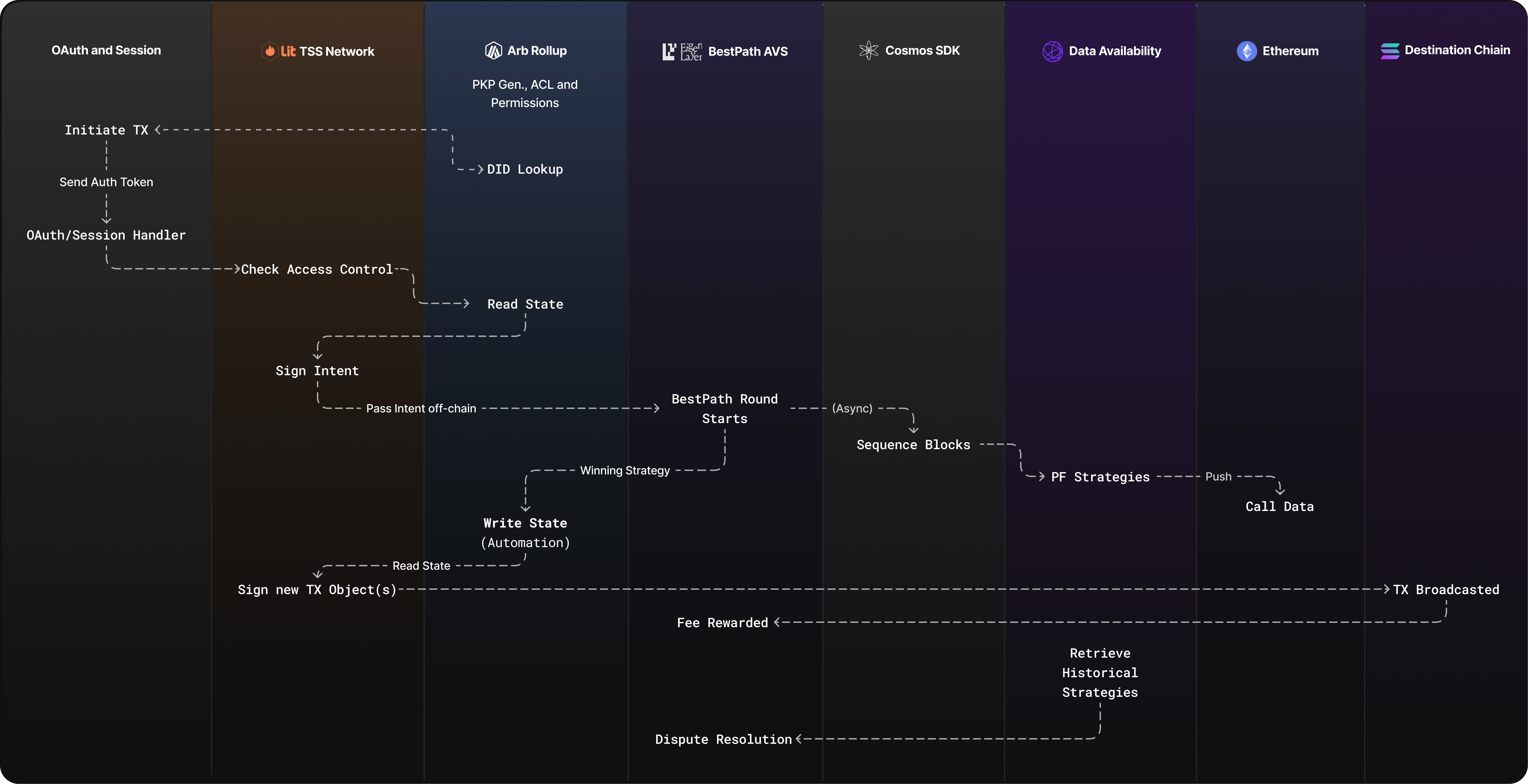Reference Transaction Flow

Tria introduces a consumer-centric framework of chain abstraction primitives that allow for assets from any virtual machine to be interfaced with another as fast, and fluent as native assets, bypassing legacy cross-chain conventions like bridging, swaps or the need to hold gas tokens. This section details a reference chain abstracted transaction leveraging Unchanied, Tria's TSS Network,and BestPath AVS.
-
Initiation: The user initiates a transaction either on-client (CoreSDK or consumer interface) or off-client (through a programmable, scheduled, or trigger-based participant). Authentication occurs via OAuth or session ID within the Session Handler.
-
Decentralized Identity (DID) Lookup (if applicable): If applicable, the user's DID is resolved using Tria's DID registry on Unchained via TheGraph resolver. This can involve resolving either Tria's DID or a third-party DID to determine the recipient's blockchain address.
-
Permissioning and TX Object Creation: Following DID lookup and user authentication, on-chain Access Control Conditions (ACC) corresponding to the Programmable Key Pair (PKP) states are read from Unchanined by the TSS Nodes. The PKP, by executing a cryptographically signed off-chain intent, also approves the automation of TXn(s) in accordance with the intent winning strategy. These permissions are required to create and sign a TX in the TSS network. This generates the initial 'Intent' which, along with the user's wallet state (encompassing state of the assets across all underlying wallets and permissisons), is shared with PathFinders in the BestPath AVS.
-
Intent sent to PathFinders in BestPath AVS: PathFinders within BestPath compete within to propose the most efficient execution path for the transaction intent entailing liquidity unification, gas abstracting, or both. This flow is further explained in the dedicated documentation: Read – Permissionless BestPath AVS.
-
Transaction Construction and Abstraction: Once the BestPath winner quorum is reached using a leaderless disburser function, a write state is executed on Unchained with (optional) TXn Object(s) to be signed. The network of TSS Nodes subscribe to events and sign these automations. Automation is critical to enabling a seamless 1-click user experience, particularly in scenarios where executing a chain-abstraction transaction necessitates multiple multi-chain signatures. Parallelly, BestPath round block data is sent to the Data Availability to be stored and settled on Ethereum Mainnet. Finally, the constructed transaction is broadcasted to the destination chain immediately, with fee rewards disbursed to the winning PathFinder. Read – Security and TSS.
-
Dispute Resolution Window: Within a 7-day period, designated challenger operators within the BestPath AVS retrieve historical BestPath strategies from the Data Availability layer. Challenger operators compare the disparity between Pre-Round Wallet State, Promised Wallet State, and Post-Round Wallet State to then take subsequent actions including slashing, dismissals or forwarding the decision to the shashing comittee.
BestPath offers the current most performant implementation of standard-agnostic, chain abstraction across the most number of virtual machines enabled by the novel Unchained construct and permissionless Darwinian dynamic incentivizing open innovation to reach maximum efficiency.
Certain sections of the documentation are currently redacted and will be available soon. This version is intended for private circulation only.